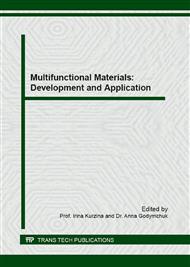p.269
p.275
p.281
p.288
p.295
p.301
p.306
p.312
p.318
Research of Gypsum-Containing Raw Materials for Obtaining of Dry Building Mixes
Abstract:
The article presents the results of overall acid fluoride raw material utilization for obtaining dry building mixes. It demonstrates that waste acid fluoride, stored for a substantial amount of time in waste piles is a crystallizing fuse for anhydrite binding materials providing improved strength performance and reduction of solidification time. Overall utilization of acid fluoride allows solving ecological problems and reduces the cost of anhydrite finishing materials due to absence of sulfate chemical additives.
Info:
Periodical:
Pages:
295-300
Citation:
Online since:
February 2016
Authors:
Price:
Сopyright:
© 2016 Trans Tech Publications Ltd. All Rights Reserved
Share:
Citation:


